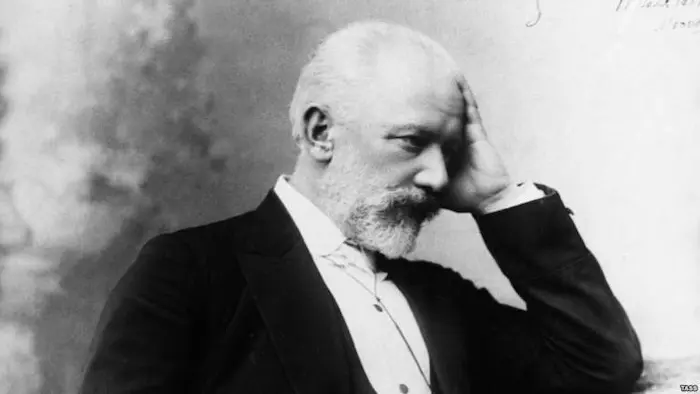Pyotr Ilyich Tchaikovsky’s Symphony No. 1 in G minor, Op. 13, also known as “Winter Dreams,” was composed between 1866 and 1868. This piece marked the beginning of Tchaikovsky’s journey into symphonic music, and although it faced initial criticism, it has become a celebrated work that showcases his unique compositional style. Symphony No. 1 is imbued with Russian folk elements, capturing the melancholic beauty of winter landscapes through its evocative melodies. This article will explore the symphony’s background, its compositional process, and the music within its four movements. Additionally, it will look at the piece’s lasting impact and the legacy it left behind.
Tchaikovsky’s Background and Early Life
Early Influences and the Path to Music
Tchaikovsky was born in 1840 in Votkinsk, Russia, into a family that valued music. From a young age, he exhibited a talent for music, but he was initially steered towards a career in civil service. Despite this, Tchaikovsky’s love for music persisted, and he eventually enrolled at the Saint Petersburg Conservatory.
Inspirations from Russian Folk Music and European Composers
Tchaikovsky’s style was influenced by Russian folk music, which is evident in his works. He also admired European composers like Mozart, Beethoven, and Berlioz. These influences are particularly noticeable in Symphony No. 1, as he blended Russian themes with the grandeur of Western symphonic tradition.
The Struggles of Composing Symphony No. 1
1. Challenges and Revisions
Symphony No. 1 was a difficult piece for Tchaikovsky to compose. He faced both internal struggles and external criticism. His teachers were harsh, leading him to doubt his abilities. He revised the symphony multiple times, trying to perfect its structure.
2. The Road to Its Premiere
The first movement of the symphony was performed in 1868, but the full symphony did not debut until later that year. While initial reception was mixed, some saw the potential in Tchaikovsky’s work. These early performances set the stage for his future successes in the symphonic genre.
Musical Analysis of Symphony No. 1
1. First Movement: Allegro tranquillo
Melodic Themes and Winter Imagery
The first movement, titled “Dreams of a Winter Journey,” opens with a gentle and tranquil theme. The music is filled with subtle shifts that evoke a peaceful, snowy landscape. This movement is notable for its contrast between the serene opening and the more dynamic, rhythmic sections that follow.
Key Changes and Orchestration
Tchaikovsky uses key changes to build tension and create variety. The orchestration in this movement reflects his interest in conveying the beauty and harshness of winter, with instruments like strings and winds creating a layered soundscape.
2. Second Movement: Adagio cantabile ma non tanto
Lyricism and Emotional Resonance
The second movement is often considered the heart of the symphony. Its melodies are tender and emotional, suggesting nostalgia and introspection. Tchaikovsky’s use of strings and woodwinds adds warmth, and the theme carries a sense of longing that contrasts with the other movements.
Influence of Russian Folk Music
This movement incorporates elements of Russian folk music, a hallmark of Tchaikovsky’s style. By blending traditional themes with the structure of a classical adagio, he creates a piece that resonates with Russian culture and the broader Romantic era.
3. Third Movement: Scherzo – Allegro scherzando giocoso
Rhythmic Playfulness and Folk Influence
The third movement shifts in tone, introducing a lively scherzo. This movement stands out for its rhythmic vitality and playful melodies. The themes draw from Russian folk dance, imbuing the piece with an energetic charm that contrasts with the melancholy of the previous movement.
Orchestral Techniques and Use of Dynamics
Tchaikovsky utilizes various orchestral techniques to create contrasts in texture and volume. The use of dynamics in this movement adds to its lively character, with sudden shifts that keep the listener engaged and provide a sense of spontaneity.
4. Fourth Movement: Andante lugubre – Allegro maestoso
Dramatic Tension and Climactic Finale
The final movement opens with a somber and dramatic theme that transitions into a powerful, majestic conclusion. This movement encapsulates the emotional breadth of the symphony, building to a grand finale that reflects Tchaikovsky’s mastery of Romantic orchestration.
Influence of Beethoven and Berlioz
Tchaikovsky’s admiration for Beethoven and Berlioz is evident in this movement’s structure and dramatic intensity. He employs techniques such as crescendos and powerful brass sections to create a sense of resolution that leaves a lasting impression on the listener.
The Legacy of Symphony No. 1
1. Influence on Later Works and the Symphonic Genre
Symphony No. 1 laid the foundation for Tchaikovsky’s later symphonic works. Elements of this piece reappear in his other symphonies, particularly in his use of folk melodies and his approach to orchestration. Tchaikovsky’s symphonies, beginning with No. 1, are now considered integral to the Romantic symphonic repertoire.
2. Modern Reception and Performances
While Symphony No. 1 was not initially regarded as a masterpiece, it has since gained recognition for its innovative approach to symphonic form. Today, it is frequently performed and celebrated for its beauty and emotional depth. The piece holds a unique place in Tchaikovsky’s catalog, representing the beginnings of a legendary composer’s journey.
See Also: Unlocking the Influence of “The Spy Who Loved Me” on Classical Music
Conclusion
Tchaikovsky’s Symphony No. 1, “Winter Dreams,” is a remarkable work that continues to captivate audiences. This symphony reveals the early development of Tchaikovsky’s style, blending Russian folk themes with the grandeur of Romantic orchestration. Despite the challenges he faced during its composition, Tchaikovsky created a symphony that evokes the beauty and melancholy of winter. Today, it stands as a testament to his talent and persistence, providing insight into the creative mind of one of history’s most beloved composers. Symphony No. 1 remains a vital part of the classical repertoire, its melodies and themes resonating with listeners as deeply as they did when they were first performed.
Related Topics

